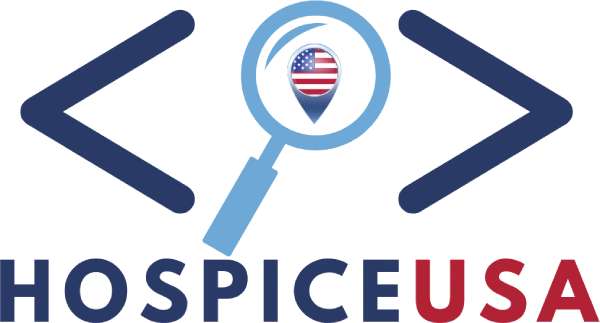Choosing the right hospice provider is one of the most important decisions a patient and their family can make when approaching end-of-life care. Ensuring that the hospice organization delivers high-quality services is essential for maintaining comfort, dignity, and support throughout the final stages of life. Evaluating hospice quality involves looking beyond general reputation and focusing on specific care practices, reporting metrics, patient outcomes, and ethical standards.
A key framework for assessing hospice care in the United States is the Hospice Quality Reporting Program (HQRP), a federally standardized system designed to monitor performance across hospice agencies. The HQRP includes four major components: the Hospice Care Index (HCI), Hospice Visits in the Last Days of Life (HVLDL), the Hospice Item Set (HIS), and the Consumer Assessment of Healthcare Providers and Systems (CAHPS). These measures provide data on how well a provider addresses patient needs, delivers services in the final days of life, and supports family members before and after the patient’s passing. Reviewing these metrics on the Medicare Care Compare website can offer insight into the reliability and consistency of a hospice organization’s care delivery.
In high-quality hospice care, the focus is centered on both patients and their families. A provider that prioritizes patient- and family-centered care will demonstrate a commitment to creating personalized care plans, offering emotional and spiritual support, and maintaining open communication. Services should be responsive to individual values, beliefs, and preferences. Effective symptom management, especially pain, is a core expectation of hospice, and the care team should be equipped to anticipate and respond to evolving needs with clarity and compassion.
Clinical excellence is another crucial indicator of quality. Reputable hospice providers follow national standards of practice, actively promote patient safety, and perform regular assessments for symptoms such as pain, shortness of breath, and nausea. Prompt identification and treatment of distressing symptoms is essential to preserving the comfort and dignity of the patient. This level of clinical reliability is typically supported by the provider’s internal training, processes, and staffing competencies.
The workforce itself plays a significant role in shaping the quality of care. High-performing hospice organizations foster a collaborative culture that supports staff development, accountability, and clinical integrity. Nurses, physicians, social workers, chaplains, and aides all contribute to care delivery, and the best providers ensure that each discipline is well-trained and supported. Many also integrate volunteer support programs, which are required under Medicare hospice regulations, and promote continuous learning across their teams.
Ethical and legal compliance is a non-negotiable foundation of a trustworthy hospice agency. Providers must adhere to applicable laws and regulations, maintain accurate documentation, and uphold patient rights at all times. Ethical behavior includes transparency in billing, clarity in explaining care options, and a willingness to address concerns without fear of retaliation. Families should feel empowered to ask questions, seek second opinions, and participate fully in decision-making.
Another strong sign of hospice quality is the provider’s engagement in performance measurement and improvement. Top-tier organizations routinely collect and analyze performance data as part of their internal quality assurance efforts. Through a structured quality assurance and performance improvement (QAPI) program, they review clinical outcomes, patient satisfaction results, and operational performance. These reviews often lead to refinements in protocols and the adoption of evidence-based best practices. Providers that take quality improvement seriously are usually willing to discuss their processes openly and share their goals for improvement.
Although accreditation is not mandatory, many hospice providers choose to be accredited by organizations such as The Joint Commission or the Community Health Accreditation Partner (CHAP). Accreditation signals that a hospice agency has met external standards of excellence and is subject to periodic evaluation. This additional layer of oversight can provide peace of mind to families seeking trustworthy care.
Family feedback also serves as a vital quality indicator. The CAHPS Hospice Survey, administered to family caregivers after the patient’s death, collects information about communication, symptom management, emotional support, and overall satisfaction. These survey results are available through Medicare’s Care Compare site and often reflect real-world experiences from people in similar situations. Providers with consistently high scores are more likely to deliver dependable, compassionate care.
Another important area to assess is the availability of specialized services and resources. Quality hospice organizations ensure that patients have access to the necessary medical equipment and medications, whether at home or in a facility. Some also offer complementary therapies such as music therapy, massage, or bereavement counseling. Adequate staffing levels, 24/7 support, and timely response to patient needs are signs that a hospice is well-managed and prepared to provide consistent care.
Transparency is perhaps one of the clearest markers of a reputable hospice provider. Agencies should be willing to explain their services clearly, respond to questions in a timely manner, and provide a copy of the care plan upon request. Families should be made aware of what is included in hospice care, how symptom management will be handled, and who to contact during emergencies. Providers that are open about their performance, staffing model, and complaint resolution process demonstrate a culture of accountability and trust.
To evaluate a hospice provider’s quality, it is helpful to start by reviewing publicly available data through the HQRP and CAHPS survey reports. Talking to healthcare professionals, asking for referrals, and speaking directly with hospice administrators can offer additional clarity. Asking specific questions—such as how often nurses visit, what support is available overnight, or how pain is managed—can reveal a great deal about a provider’s approach to care.
Ultimately, hospice care should reflect a commitment to comfort, compassion, and competence. Evaluating quality is not just about choosing a provider—it’s about ensuring that patients and their families experience dignity, support, and peace throughout one of life’s most difficult journeys.



